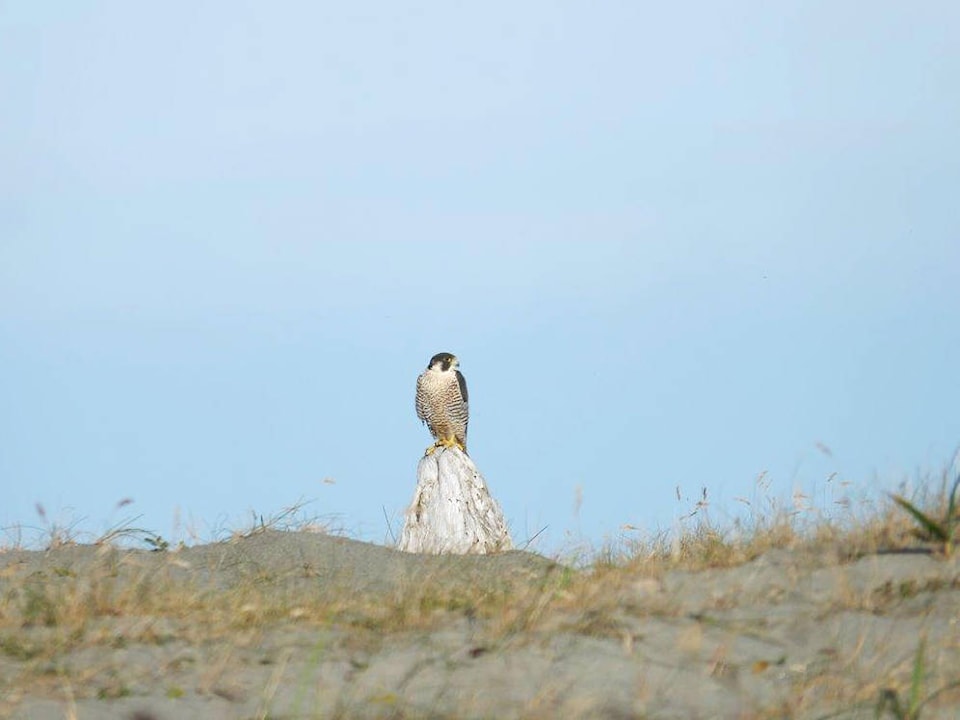By Margo Hearne
We don’t often see a tussle between different species of falcon, but there they were, doing some wonderful aerial aerobatics. The Peregrine was certainly upset about the interloper in its territory: a Gyrfalcon, larger and stronger. The Peregrine kept after it before they went their separate ways — the gyr to finish a goose either it or its attacker had taken earlier, and the falcon back to the trees.
Gyrfalcons are uncommon here — the last sighting was about six years ago. It stayed through mid-winter and kept the geese on the move. It often sat on a cement slab in the airfield. On its nesting grounds in the Arctic tundra, gyrs will perch on a rock outcrop while keeping a lookout for any movement, then will fly fast and low, “contour hugging” in a surprise attack. Ptarmigan is its diet of choice. If there are not many around, the Gyrfalcon simply won’t breed.
The poet Yeats wrote “turning and turning in the widening gyre, the falcon cannot hear the falconer.” The Gyrfalcon is possibly the only falcon that circles, or gyres, in its search for prey and it’s away up there out of our reach, focused on something else. When it sees a vulnerable bird, out comes the sickle-shaped talons that show no mercy. The word falcon apparently comes from the Latin falco, meaning sickle. So there we have it — a bird that circles with sickle-shaped wings and talons.
This bird was dark brown. More often than not the gyrs seen here are either grey or white, so it took a while to figure out what it was. It didn’t seem that much bigger than the Peregrine, which can also be dark brown, and we didn’t initially get a close enough look to see the finer points of its facial features. Peregrines always have broad, dark moustachial stripes — gyrs are much narrower. However, next morning we were lucky enough to get a good look and saw the narrow stripes. The bird might stay around to follow the small cackling geese that are hugging the ground.
November’s wind and rain brought juncos to the feeder. They come to their own routine, often first thing in the morning and then again at dusk. A Song Sparrow reappeared after being absent for some time and the little chickadees zip in and away like bees. The ducks are lining the edge again. Among the flock, an unusual Eurasian Wigeon mixes with the American Wigeon. There’s a single American Coot in a local pond, black with a white bill. It’s a species all of its own, mixed in with the marsh birds and was never a duck.
